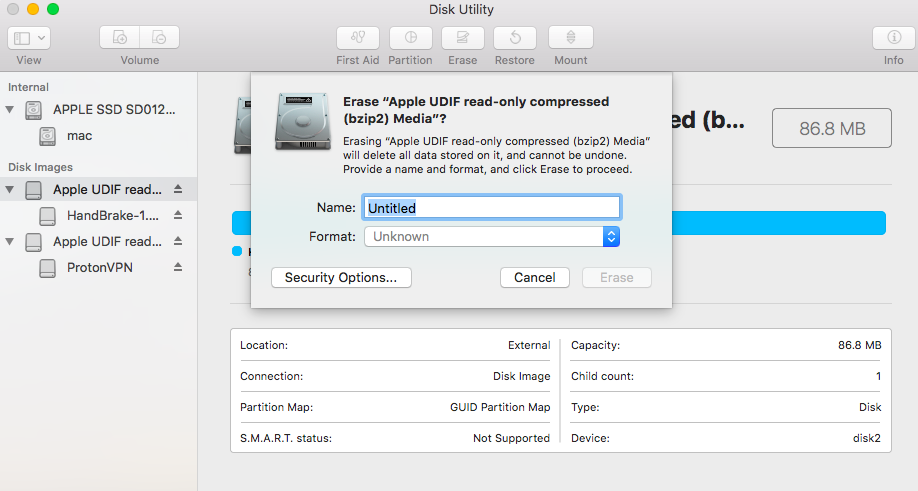

- #ERASING AND CREATING FAILED COULD NOT UNMOUNT DISK HOW TO#
- #ERASING AND CREATING FAILED COULD NOT UNMOUNT DISK MAC#
Quit Terminal.app and run Disk Utility from the main “OS X Utilities” app.ĭisk Utility should show “Fusion Drive” without any partitions in it, which is expected since we just created the Logical Volume Group without any Logical Volumes in it.
#ERASING AND CREATING FAILED COULD NOT UNMOUNT DISK MAC#
On my Mac Mini it took about a minute to finish.ĭiskutil cs list you should see just a Logical Volume Group and as many Physical Volumes as you added (which is two in my case, disk0s2 and disk1s2), without any Logical Volumes yet. stuff to include the partitions that diskutil said it erased & mounted in the prior step. diskutil will print things about erasing the physical partitions that made up the logical volumes, which in my case were /dev/disk0s2 (a 931GB partition on the internal hard disk) and /dev/disk1s2 (a 113GB partition on the internal SSD). Pay attention to the names of the devices that it just liberated on your system, since you’ll use those device names in the next step.Īt this point you have two empty HFS+ partitions that are not a Fusion drive anymore, so you’ll want to rebuild the LVG from those two physical partitions.ĭiskutil cs create 'Macintosh HD' / dev / disk0s2 / dev / disk1s2 and adjust the /dev/.

(Maximize the terminal window that opens so it’s easier to see the output of the next step.)ĭiskutil cs list. From the Utilities menu of the “OS X Utilities” app, open Terminal.If you have gotten to this article you have probably already been into Disk Utility a few times already without success, so don’t open Disk Utility. Boot the recovery volume, which will take you to an OS X Utilities page that shows four options: “Restore From Time Machine Backup”, “Reinstall OS X”, “Get Help Online”, and “Disk Utility”.Only do this if you’re completely ready to just burn it all down to the ground and start over with a blank boot disk. The magic incantation that fixed it was inspired by instructions I found here:
#ERASING AND CREATING FAILED COULD NOT UNMOUNT DISK HOW TO#
Recovery mode was OK but couldn’t erase the boot volume nor mount it via Disk Utility (I just got “Unable to delete the core storage logical volume”), so reinstalling seemed impossible.įortunately, I figured out how to do it, using some help from a StackExchange post I found. See below for the details. Nothing would make it boot normally again. My Mac Mini w/ Fusion Drive (that’s a hard disk and an SSD pretending to be a single volume for better performance) froze and wouldn’t boot.


 0 kommentar(er)
0 kommentar(er)
